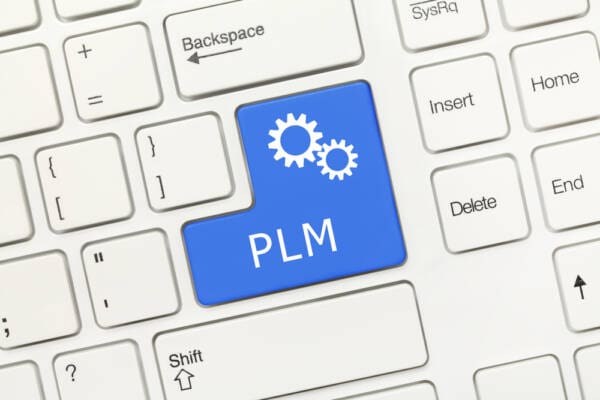
PLM System Implementation is essential for enhancing operations, collaboration, and innovation. Successfully navigating the complexities of PLM system implementation can unlock substantial benefits. Yet, despite its potential to revolutionize product development and data management processes, many organizations face significant challenges during PLM system implementation. Too often, effective deployment hinges on understanding the multifaceted nature of PLM, making the necessary organizational changes to capitalize on it, and giving your key PLM resource enough time to do it.
Key #1: Understand the Breadth of PLM Capabilities
PLM is far more than a data management repository. It encompasses a wide range of functionalities spanning the entire product lifecycle. At its core, PLM includes critical capabilities such as computer-aided design (CAD) data management, enterprise document management, configuration management, bill of materials (BOM) management, enterprise change management, project management, and workflow automation.
These fundamental features allow organizations to manage product data, streamline processes, and improve collaboration across different departments. However, the breadth of PLM stretches beyond these core functionalities.
Extended PLM system implementation capabilities include xBOM management for handling various types of bills of materials, variant management to deal with product variations, supplier management and collaboration tools, quality management systems (QMS), and project execution features. Modern PLM systems often integrate with other product areas, such as application lifecycle management (ALM), model-based systems engineering (MBSE), and Internet of Things (IoT) platforms.
To fully harness PLM’s potential, companies must understand configuration and change management principles for correlating all product data, managing data maturity through lifecycle states within PLM, and ensuring closed-loop quality enterprise change management. This involves adopting best practices that comply with industry-proven standards like CMII while changing your data and processes to align with these practices for effective PLM implementation.
Key #2: Determine the Enterprise Application Footprint
The complex, disparate application landscape is the biggest obstacle for organizations in implementing PLM. Thus, efficient data management and process integration first require determining which tools should own what data and processes and how these tools should be connected or integrated.
The enterprise application ecosystem may include a range of solutions, such as:
- Enterprise Resource Planning (ERP)
- Product Data Management (PDM)
- Product Lifecycle Management
- Customer Relationship Management (CRM)
- Quality Management Systems
- Manufacturing Execution Systems (MES)
- Application Lifecycle Management
- Service Lifecycle Management (SLM)
- Internet of Things Platforms
- Model-Based Systems Engineering Tools
- Configure Price Quote (CPQ) Systems
- Supply Chain Management (SCM) Solutions
One of the key hurdles in defining the application footprint is addressing the overlapping functions between different enterprise systems – particularly among PLM and other applications like ERP, MES, and QMS. For instance, when considering PLM and ERP integration, it’s crucial to differentiate their roles and identify areas where they can complement each other. A strategic approach may involve deriving manufacturing BOMs and routes within the PLM system and then pushing this information to the ERP system, leveraging the strengths of both platforms. Even if both applications have similar functionality, additional items such as upfront collaboration between engineering and manufacturing or performing more automated, comprehensive impact analysis during a change should be included to determine the optimal strategy.
Key #3: Identify the Source of ROI
Evaluating your PLM investments is imperative for justifying the time and resources required. The return on investment (ROI) of PLM is multifaceted and extends beyond simple cost reduction.
One primary source of ROI is the enhancement of collaboration across different departments — and even geographical locations. By providing a centralized platform for product data and processes, PLM significantly reduces time to market, allowing companies to respond more quickly to market demands. This improved efficiency often translates into tangible cost savings and increased revenue opportunities.
Another source of ROI lies in PLM’s impact on product quality and cost efficiency. By managing complex product data and processes more effectively, PLM helps organizations reduce errors, minimize rework, and optimize resource allocation. The ability to make data-driven decisions throughout the product lifecycle also leads to more cost-effective design choices and manufacturing processes.
When evaluating PLM investments, consider both the direct cost savings and long-term strategic benefits, such as improved innovation capability and increased market agility, which can provide a sustained competitive advantage.
Key #4: Make the Necessary Organizational Changes
PLM implementation is more than technology deployment. It requires organizational changes to maximize its capabilities. The first step is assessing the company’s maturity level for PLM adoption and developing a clear vision of the desired future state. This gap analysis forms the foundation for a comprehensive strategy to bridge the divide, addressing technological aspects, processes, skills, and cultural elements.
A critical component of this strategy is developing a PLM organizational structure with a well-defined charter. This structure should outline roles, responsibilities, and decision-making processes related to PLM, ensuring all team members have the appropriate level of knowledge for their roles through proper training and mentoring.
Implementing PLM also involves moving from a reactive to a proactive culture, where continuous improvement and collaboration become the norm. Companies must align their organizational goals with PLM capabilities to drive innovation and mitigate resistance to change.
The Streamlined Approach to PLM Implementation
Overcoming the challenges of PLM implementation involves understanding PLM’s capabilities, determining the application footprint, identifying clear ROI sources, and making organizational changes. Addressing these key areas will result in a more successful implementation and the benefits that come with it, including enhanced collaboration and efficiency, reduced time to market, and improved product quality.
Request a PLM assessment at TriStar.com/plm-assessment and see what TriStar can do for you.
Links to Other Pages
- PLM Implementation: Learn effective strategies for PLM implementation, optimizing your product lifecycle management processes for enhanced efficiency.
- AI in Architecture: Revolutionizing Design and Construction: Discover how AI is revolutionizing design and construction in architecture, driving innovation and efficiency in building projects.
- PLM Architecture and Services: Explore PLM architecture and services and understand how they integrate to support comprehensive product lifecycle management solutions.
- Organizational Change in PLM: Manage PLM organizational change effectively with our insights, ensuring a smooth transition and alignment with your business goals.
- Windchill Change Management Software: Streamline your change management processes with Windchill software, which facilitates the efficient and accurate management of product modifications.






Leave A Comment